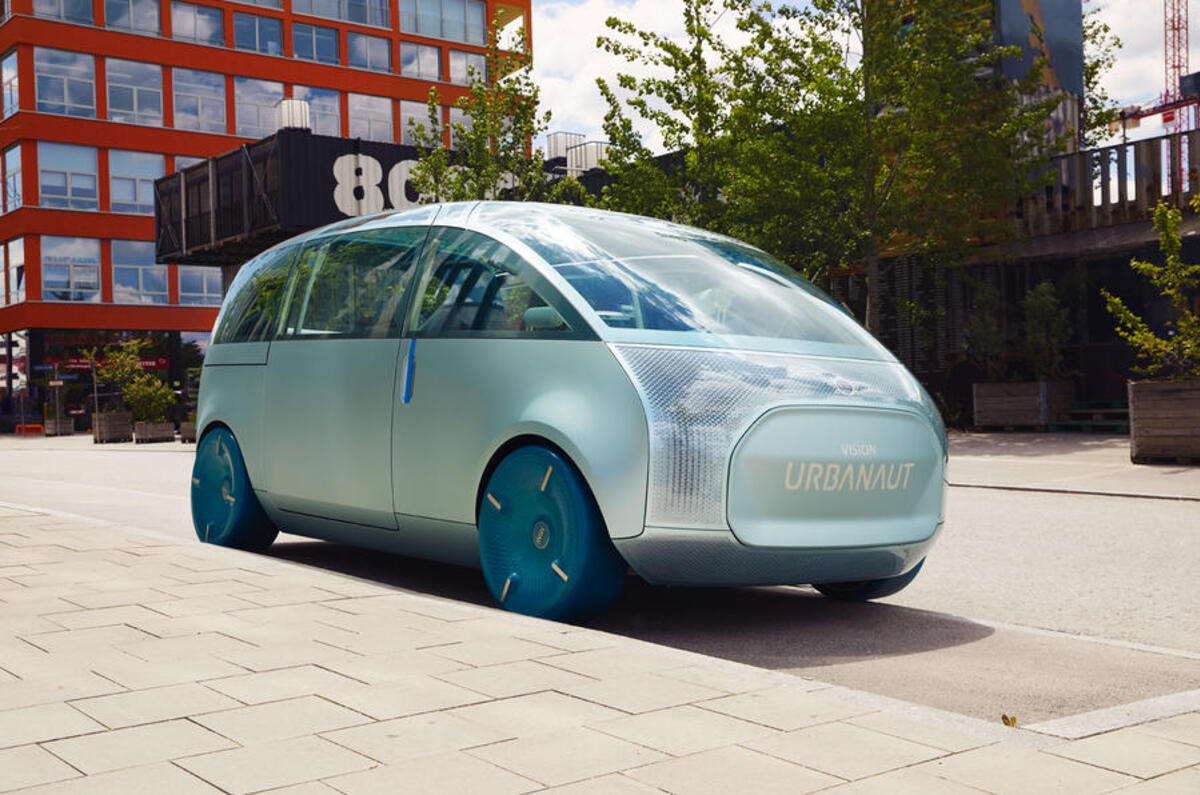Mini is developing a plan to put its Urbanaut into production, should it solve the technical challenges of bringing such a radical concept to life.
The concept, making its motor show debut in Munich today after a physical debut last year, is 4.5 metres long and was designed to showcase just how flexible an interior can be.
Munich motor show 2021: all new cars and updates
Mini designer Oliver Heilmer, speaking to Autocar at the Munich motor show, said conversations inside BMW have shifted from him having to explain the purpose of the concept to discussions about how to make it a reality.
“With what we achieved, BMW is now thinking there is a chance for production, and how,” he said.
“As you can imagine, it’s a long process. It’s a different platform [to any current Mini], and from a technical point of view it’s a challenge as it has things like steer by wire that’s not in production yet. But we’ll never give up on it.”
Heilmer said that it was always his intention to make the Urbanaut a consideration for production, as “it would be a waste of resources not to”. If it does go ahead, it would be at least five years away.
He said it would appeal to a new type of buyer for Mini, of larger families looking for more space and flexibility while still in a compact package. “Every normal car is too small,” he said, unless you have the budget for a much larger car.
The Urbanaut is created with the same spirit and ethos as the original Issigonis Mini, said Heilmer, in its clever use of space and the car containing only what is necessary, with no superficial elements.
Whether or not it makes production, the Urbanaut will still influence the next generation of Minis that will start with the fourth-generation BMW-developed hatchback due by 2025. It will mirror the Urbanaut in “focusing only on what is necessary”, according to Heilmer.
The next Mini will be marginally shorter than the current car and have better proportions particularly at the front with the wheels again pushed back to the corners. This is possible by switching to an electric vehicle architecture, with the hatch tipped to be EV-only ahead of all Minis being electric-powered by the end of the decade.
READ MORE
More details on the Mini Urbanaut concept
Bespoke Mini Strip highlights firm's sustainability push
All the news from the Munich motor show









Join the debate
Add your comment
It bears a strong resemblance to Rovers Spiritual concept to replace the original Mini in the late 90s. That used a K series motor canted 90 degrees beneath the rear seat so couldn't be productionised. As a BEV there's no problem